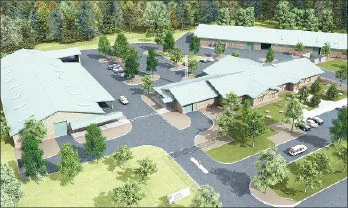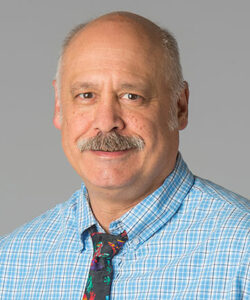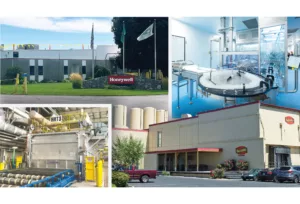
Home » Border Patrol gears up for larger stations
Border Patrol gears up for larger stations
Spokane Sector projects valued at $48 million planned or under way

November 3, 2011
Three construction projects valued at $45 million are under way in the Spokane Sector of U.S. Customs and Border Protection, and another $3 million has been approved for the first phase of a fourth project, the federal agency says.
Border Patrol stations at Colville and Oroville, near Eastern Washington's international border with Canada, and at Bonners Ferry, near Idaho's northern border, are being replaced with larger facilities valued at $15 million each, says James Frackelton, spokesman for the Border Patrol's Spokane Sector.
Each station will support 50 to 75 agents, and the three Border Patrol complexes each will include three main buildings, Frackelton says.
JKT/PCL JV, of Bellevue, Wash., is the contractor on the projects, and the Seattle office of the U.S. Army Corps of Engineers designed them. JKT/PCL is a joint venture of Edmonton, Alberta-based PCL Construction Services Inc., and JKT Development Inc., a Sequim, Wash.-based subsidiary of the Jamestown S'Klallam Tribe. The contractor couldn't be reached for comment, so it wasn't immediately clear how many, if any, Spokane subcontractors or workers are involved in the projects.
Also, the U.S. Department of Homeland Security, which oversees Customs and Border Protection, has approved initial funding to start the first phase of a similar project planned to replace the Border Patrol station at Curlew, Wash., Frackelton says.
The three projects that are under way each involve constructing 14,000-square-foot station building, a 21,000-square-foot garage, and a 25,000-square-foot equestrian-and-canine training facility, he says.
The station buildings will include office space, detainee processing and holding areas, training facilities, locker rooms, restrooms, and secure storage for Customs and Border Patrol equipment and seized materials, Frackelton says.
The canine-and-equestrian facilities will include office space, dog kennels, horse stalls, animal training areas, and feed- and equipment-storage areas, he says.
Agents often patrol border areas on horseback in terrain that are inaccessible by motorized vehicle, Frackelton says. Other off-road modes of travel sometimes used by Border Patrol agents include all-terrain vehicles, snowmobiles, and boats, he says.
The construction projects also include site work, such as constructing roadways, parking lots, security fencing, lighting, landscaping, emergency power, and utility services.
The Colville site, on U.S. 395, some 70 miles northwest of Spokane, is a few miles northwest of the current Border Patrol station, which is near the Colville city center. That station was built in 1963 and remodeled in 2004, Frackelton says.
The Bonners Ferry project site is at the southwest corner of Moon Shadow Road and U.S. 95, three miles north of the current station in Bonners Ferry, and about 110 miles northeast of Spokane. The Bonners Ferry station was established in 1924. It originally was located in Priest River, Idaho, and after a series of moves and consolidations, operations were centralized in Bonners Ferry, which became the sector headquarters in 1934. The headquarters moved to Spokane in 1942, and the Bonners Ferry facility since has continued to operate there as a Border Patrol station.
The Oroville project site is 180 miles northwest of Spokane on U.S. 97 and is nearly five miles north of the current station, which is in the city of Oroville. The original station was established in 1924 and has been at its current location since 1972, Frackelton says.
All of the stations are overcrowded due to beefed-up staffing since the Border Patrol was placed under the auspices of Homeland Security, Frackelton says.
While he declines to disclose the current staffing level at most individual stations, Frackelton says that at Curlew, 37 agents are working in 45-year-old facilities originally designed for seasonal use for four or five U.S. Forest Service fire personnel.
Expanding the Border Patrol station at Curlew is the Spokane Sector's next highest priority following the projects at Colville, Oroville, and Bonners Ferry, Frackelton says.
The new Curlew station would be located on Customs Road, west of State Route 21, about 120 miles northwest of Spokane.
That project isn't fully funded, but $3 million is approved to begin a phased approach that initially will include an equestrian facility, security fencing, and some electrical improvements, Frackelton says.
Plans for one or more subsequent phases include an 11,500-square-foot Border Patrol station, a 24,300-square-foot maintenance facility, and covered parking for 50 vehicles, environmental documents issued by the Corps of Engineers say.
The documents also list plans for additional surface parking for up to 75 vehicles, and a 24,300-square-foot horse arena.
The new Curlew station would be located along Customs Road west of State Route 21, about 120 miles northwest of Spokane.
Frackelton says he doesn't know whether a contract has been awarded for the initial phase of that project.
The Spokane Sector employs a total of 300 people and operates seven Border Patrol stations, including stations in Metaline Falls, Wash., and Eureka, and Whitefish, Mont., and substations in Pasco and Wenatchee, Wash., Frackelton says.
The Spokane Sector's territory includes the international border and ports of entry from the crest of the Cascade Mountains in the west, eastward to include a large portion of Glacier National Park, in Montana.
Its responsibilities include apprehending cross-border violators, intercepting contraband, and preventing terrorists and illegal weapons from entering the country.
Latest News
Related Articles



_web.webp?t=1764835652)
